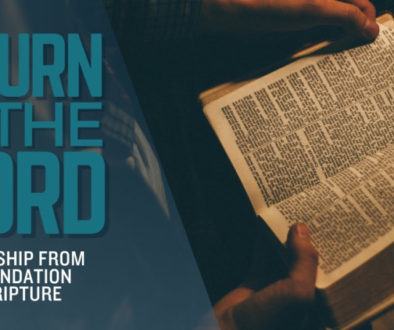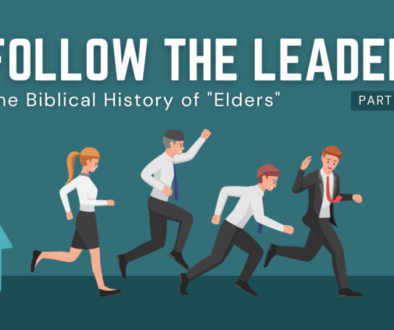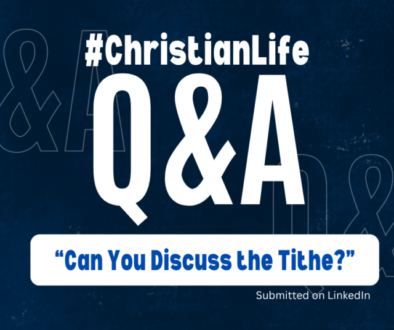As we continue our seres on “God’s Gossip,” we have already discussed that for it to be a “gospel,” it must be shared. We then looked at the first of two storylines1, which will enable you to easily remember the gospel story and share it with others. In this post, we will look at the second storyline. I call it the “sky-level gospel.”
Though the first method is simpler, and can be used for a quick presentation of the gospel, the second method is, by far, my favorite. Whereas the first method keeps things close to the ground, this method will take the person up higher, and give them the 30,000-foot view of the entire gospel narrative.
This method uses the full story of scripture to lay out God’s beautiful, original plan; the problem of sin in humanity, and the reason for which Christ came into the world. If the person is far from getting saved, it can also be shared conversationally when giving an explanation of your faith, without adding the immediate pressure of a response. It can act as the starting point to impart faith in God, that may lead to a later decision.
The four keywords to learn for this method are Creation – Fall – Redemption – Restoration. Let’s take a look at them.
Creation
God created all things in the beginning and made them good (Genesis 1:1-31). He put humanity in charge of His creation, giving him authority to rule as a steward of God’s universe (Genesis 1:26, 2:19). Again, this creation was perfect and holy, and man himself was righteous having been created in the image of God.
God’s original intention was that creation, from Eden, spreading to the ends of the earth, would be a physical representation of heaven. Righteousness would rule, and mankind would live in harmony and fellowship with God, as they lived out His will on the earth (Genesis 1:28).
Fall
After God created the world and placed man in the Garden, He gave one commandment, which would ensure that Adam and Eve – the first man and woman – were faithful to the covenant He made with them to rule the earth. They were not allowed to eat of one tree in the garden, lest they die (Genesis 2:15-17).
It didn’t take long for mankind’s curiosity to rise up, and one day Eve was admiring the fruit of the tree, with Adam by her side. Taking it as his first opportunity to tempt the humans and mess up God’s plans, the devil tempted the man and woman, and they ate the fruit (Genesis 3:1-6).
When mankind sinned against God for the first time – the event we call ‘The Fall’ — not only was man affected with a curse, but the whole creation as well. This is why everything we see in the world is not as it was originally intended to be: war, famine, sickness, violence, natural disasters, etc (Genesis 3:14-19).
Another downside of the fall was that the authority over the earth which God had given to mankind was then delivered to the devil (Luke 4:5-6), who has become ‘the God of this world’ and ‘the prince of the power of the air…at work in the sons of disobedience‘ ( 2 Corinthians 4:4 and Ephesians 2:2). The world mankind was intended to rule, is now controlled by sin, death, and the devil.
Redemption
The good news (gospel) is that God has a rescue plan for humanity and all of His beloved creation. When we say “redemption,” it is a theological word meaning that on the cross, not only did Jesus die for our sins, but He also came to break the curse over creation and reclaim what was lost in the fall. According to Luke ‘…the Son of Man has come to seek and to save that which was lost’ (Luke 19:10).
This goes beyond just the salvation of souls, but also the restoration of righteousness and justice in the earth, and ultimately the redemption of authority over creation. This is why after the resurrection, Jesus tells the disciples that He has all authority in heaven and on earth (Matthew 28:18).
The promise of redemption for individuals comes when we begin to trust Jesus as the Savior from God. This is where an offer of personal salvation comes in to the story. If Jesus is the Redeemer of all things, that means He also redeems us, and brings us back to our original intended relationship with God the Father. He also gives us new life and restores our ability to walk in holiness by faith in Him.
Restoration
The Greek word for “be saved” is the word “sozo” which I think is a great name for a ministry. It literally means we are saved in every way. It translates as “to be saved from judgement for your sins,” “to be healed (saved) from sickness and disease,” and “to be delivered (saved) from the power of your enemy (the devil).” Not only does salvation bring eternal life for the believer, but it begins the process of restoration, when we will be returned to God’s original intention for the creation.
Though we are not made completely perfect in the moment of salvation, we now recognize Jesus as the Lord of our life and submit to Him. As we work to build our relationship with Him, we also begin to be conformed to His image once again, just as we were originally created to be in the beginning (2 Corinthians 3:18).
This presentation of the gospel then looks forward to the day when Jesus will return and we will see the final restoration of all things back to the way God intended them to be in the beginning. Sin and death and the devil will be dealt their final blow. Jesus will judge the world according to whether or not their faith was in Him, and then He, along with all those who believed in Him as Savior will see all things finally made right. There will be a new heaven and new earth, and all the promises from the Bible will finally be fulfilled.
It is now the role of all believers to be living their lives with restoration in mind. That is why we share the gospel, pray for the sick, and cast out demons wherever they rear their ugly heads (Matthew 10:1,7-8).
Lead Them Toward Discipleship
One final note about this gospel story line: even if you do not use this method for reaching the person in salvation, it is an important story for them to understand once they are saved. Therefore, if the person gets saved using the ground-level version of the gospel, then the high-level gospel should be discussed with them, in depth, as you begin the process of discipleship.
No matter which method you use to preach the gospel, what must be made clear is that our goal in sharing the gospel is to take a lost person and lead them to salvation in Christ. We must be bold to share the gospel, and we must give them the opportunity to accept Christ as their personal Savior.
Let’s Connect
In the next post, we will discuss why sharing your own testimony is an important part of your gospel witness, and how to share your story clearly. To make sure you never miss a future post, it would be my honor to have you sign up for my weekly newsletter. It goes out every Sunday morning. I promise not to spam your inbox or share your information with anyone.
You can also follow me on social media. I can be found on Facebook, Instagram, Twitter, and Parler. I’d love to see you there.
Also, if you want to find out more about the ministry I oversee, sharing the gospel and planting churches in East Africa, you can find it a www.SozoMinistries.net. There are plenty of opportunities for you to get involved!
1 These two story lines do NOT originate with me. I have heard these two ways of sharing the gospel repeated in many teachings and writings by various pastors, especially during my time working for an Acts29 Network church, so it would be impossible for me to footnote any specific reference. Suffice it to say, (though I have not read it) I believe Pastor Matt Chandler of The Village Church has explained these two ideas in depth in his book, The Explicit Gospel, published by Crossway.
© Anthony Scott Ingram 2020
Unless otherwise indicated, all Scripture quotations are from The Holy Bible, English Standard Version®, copyright © 2001 by Crossway Bibles, a publishing ministry of Good News Publishers. Used by permission. All rights reserved.”
Cover Photo by Dylan McLeod on Unsplash



